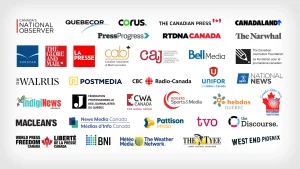Emergence of Independent News Platforms

Over recent years, the media landscape has witnessed a significant transformation with the emergence of independent news platforms. These outlets are challenging the traditional media dominance that has long shaped public opinion and information dissemination. Unlike conventional media houses, which often operate under corporate influences or governmental pressures, independent news outlets strive to present unfiltered and unbiased news. This shift is not merely a disruption but a fundamental change in how news is produced, consumed, and perceived.
The rise of independent news outlets has fostered diverse perspectives, enriching the media ecosystem with a variety of voices and viewpoints. Traditional media often adheres to a specific narrative, influenced by ownership and advertiser interests, which can limit the scope of reporting. In contrast, independent platforms are typically driven by a commitment to journalistic integrity and the representation of underreported stories. This diversity in reporting helps to ensure a more comprehensive understanding of global and local issues, providing audiences with a broader spectrum of information.
Challenges to Traditional Media
The emergence of independent news outlets has posed significant challenges to the credibility of traditional media. Mainstream media organizations, once considered the gatekeepers of information, are increasingly scrutinized for their biases and potential conflicts of interest. Independent outlets, by offering alternative viewpoints and investigative journalism, have highlighted the shortcomings and biases within traditional media. This has led to a growing skepticism among audiences regarding the reliability of mainstream news sources.
Furthermore, independent news outlets attract audiences seeking unbiased information. In an era where misinformation and sensationalism are rampant, many consumers are turning to independent platforms for more balanced and factual reporting. These audiences are often disillusioned with the perceived partiality of traditional media and are looking for news that is free from corporate or political influence. The ability of independent outlets to provide such content has enabled them to build a loyal and discerning readership.
Diversification of News Sources
The rise of independent news outlets has significantly contributed to the diversification of news sources. By fostering diverse perspectives in media, these platforms ensure that a multitude of voices and opinions are heard. This diversification is crucial in a democratic society, where access to a wide range of information is essential for informed decision-making. Independent news outlets often cover stories that are overlooked or ignored by mainstream media, thereby filling critical gaps in news coverage.
Moreover, the rise of independent news outlets challenges the traditional media dominance that has long dictated the flow of information. By offering alternative narratives and investigative reporting, these platforms are breaking the monopoly of mainstream media and democratizing news dissemination. This shift is empowering audiences to seek out and engage with a variety of news sources, leading to a more informed and critical public.
Role of Social Media in News Dissemination
Independent news outlets have adeptly leveraged social media for wider reach, utilizing platforms like Twitter, Facebook, and Instagram to disseminate their content. Social media has become a powerful tool for these outlets, allowing them to bypass traditional distribution channels and connect directly with their audience. This direct engagement not only broadens their reach but also fosters a sense of community and loyalty among readers.
Furthermore, social media amplifies the influence of independent news outlets. Through shares, retweets, and likes, content from these platforms can quickly go viral, reaching a global audience within minutes. This amplification effect is particularly potent for independent outlets, which often operate with limited resources compared to mainstream media. Social media thus serves as an equalizer, enabling independent news platforms to compete with larger, more established media organizations.
Trust and Credibility Issues

The rise of independent news outlets has also brought trust and credibility issues to the forefront. By challenging the traditional media’s trust and credibility, these platforms are prompting audiences to critically evaluate the sources of their news. Mainstream media, often perceived as biased or influenced by external interests, is facing increasing scrutiny. Independent outlets, by contrast, are gaining recognition for their commitment to transparency and unbiased reporting.
As a result, public trust is shifting towards independent news outlets over mainstream media. Many consumers are now more inclined to rely on independent platforms for accurate and trustworthy information. This shift is indicative of a broader trend towards seeking out news sources that prioritize journalistic integrity and accountability. The growing trust in independent outlets underscores the changing dynamics of media consumption and the evolving expectations of news audiences.
Economic Viability of Independent Outlets
Independent news outlets are proving to be economically viable by attracting niche, loyal audiences. Unlike mainstream media, which often relies on broad appeal and mass advertising, independent platforms cater to specific interests and communities. This targeted approach not only helps in building a dedicated readership but also enhances engagement and loyalty. Niche audiences are more likely to support independent outlets through subscriptions, donations, and other forms of financial backing.
Moreover, independent news outlets offer cost-effective, targeted advertising options. By focusing on specific demographics and interests, these platforms can provide advertisers with more precise and effective marketing opportunities. This targeted advertising model is particularly appealing to smaller businesses and organizations looking to reach specific audiences without the high costs associated with mainstream media advertising. The economic viability of independent outlets thus lies in their ability to cater to and monetize niche markets effectively.
Future Prospects for Journalism
Looking ahead, the future prospects for journalism are being significantly shaped by the rise of independent news outlets. These platforms are fostering diverse perspectives in journalism, ensuring that a wide range of voices and viewpoints are represented. This diversity is vital for the health of democratic societies, as it promotes a more informed and engaged citizenry. Independent news outlets are also challenging traditional media’s influence and credibility. By offering alternative narratives and investigative reporting, they are pushing mainstream media to uphold higher standards of journalistic integrity. This competition is likely to result in a more robust and accountable media landscape, benefiting audiences and society as a whole.
Conclusion:
In conclusion, the rise of independent news outlets is reshaping the media industry in profound ways. By challenging traditional media dominance, fostering diverse perspectives, and leveraging social media, these platforms are redefining how news is produced and consumed. As public trust shifts towards independent outlets, and as they continue to prove their economic viability, the future of journalism looks set to be more inclusive, accountable, and dynamic.




